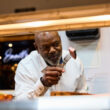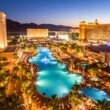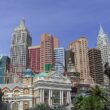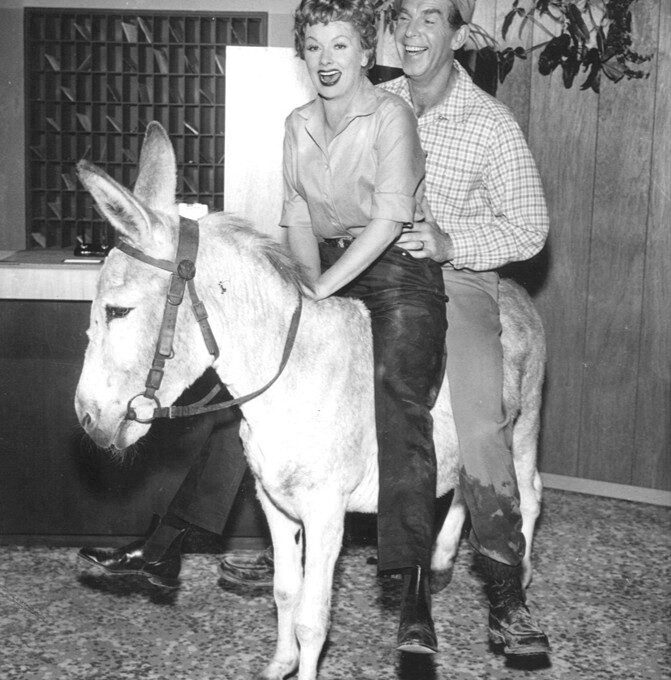Did you know that comedy show production in Las Vegas involves a complex orchestration of talent, technology, and timing, transforming a simple stage into a laughter-filled spectacle that draws millions of visitors each year? In a city renowned for its dazzling entertainment, comedy shows stand out as a cornerstone, offering everything from stand-up routines to improv performances in iconic venues like Jimmy Kimmel’s Comedy Club and the Comedy Cellar. Producing these shows requires meticulous planning, creative collaboration, and a deep understanding of audience dynamics. This article pulls back the curtain on the intricate process of comedy show production in Las Vegas, exploring the roles of key players, the logistical challenges, and the unique elements that make these performances a vital part of Sin City’s allure.
The Foundation: Conceptualizing the Show
The journey of a Las Vegas comedy show begins long before the spotlight hits the stage. It starts with a vision, often driven by a producer or venue owner who identifies a gap in the entertainment landscape or a specific audience demand. In Las Vegas, where competition for attention is fierce, producers must craft shows that are both unique and broadly appealing. For instance, Jimmy Kimmel’s Comedy Club at The LINQ Promenade, curated by the famous comedian himself, aims to blend household names with up-and-coming talent, creating a diverse lineup that appeals to tourists and locals alike.
Producers collaborate with talent bookers to select comedians whose styles align with the venue’s brand. The Comedy Cellar at the Rio Hotel, for example, replicates its New York counterpart by featuring five headliners per show, each delivering a tight 20-minute set. This format requires bookers to carefully curate acts that complement each other, ensuring a seamless flow of humor. The booking process involves scouting talent at festivals, reviewing social media presence, and sometimes hosting open mic nights to discover local performers. Comedians like Orny Adams and Jamie Lissow, who perform at Jimmy Kimmel’s, are chosen not only for their comedic prowess but also for their ability to engage diverse audiences, a critical factor in Las Vegas’s tourism-driven market.
Once the talent is secured, producers work with directors or showrunners to develop the show’s structure. Stand-up shows, like those at Brad Garrett’s Comedy Club at the MGM Grand, typically follow a traditional format with an emcee, a middle act, and a headliner. Improv shows, such as those at Mom’s Basement Theatre, require more flexibility, with directors planning loose frameworks that allow for audience interaction. The conceptualization phase also involves deciding on the show’s tone—whether it’s family-friendly, as seen in some performances at the L.A. Comedy Club, or adult-oriented, like the racy humor at Delirious Comedy Club. This foundational work sets the stage for the logistical and creative efforts that follow.
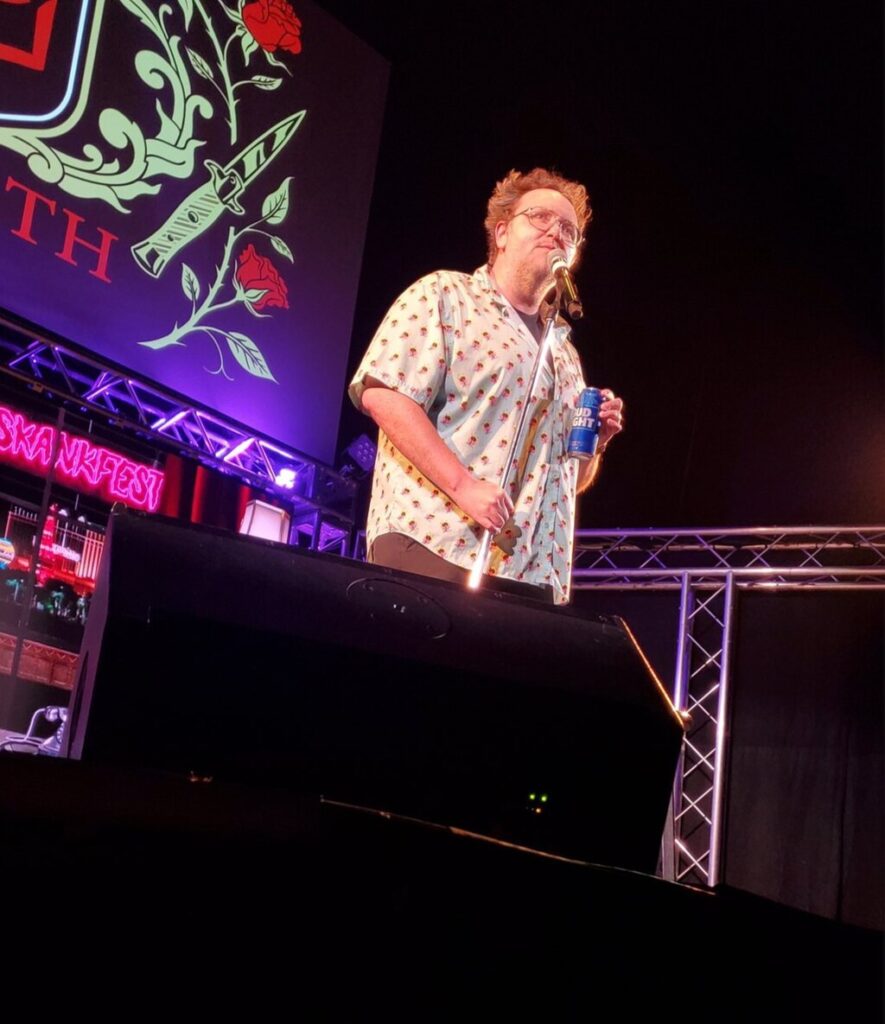
Casting and Rehearsals: Bringing the Vision to Life
Casting comedians is a critical step in comedy show production, as the performers are the heart of the experience. In Las Vegas, casting often involves a mix of resident headliners, such as Carrot Top at the Luxor, and touring comedians like Sebastian Maniscalco, who perform limited engagements at venues like the Encore Theater. Producers and bookers prioritize performers with a proven track record, but they also take risks on emerging talent to keep the scene fresh. For example, the L.A. Comedy Club at The STRAT has launched careers for comedians like Aziz Ansari, showcasing its commitment to nurturing new voices.
Rehearsals for comedy shows differ significantly from those for theater or dance productions. Stand-up comedians typically refine their material independently, testing jokes at smaller venues or open mic nights before bringing them to Las Vegas. However, producers may organize run-throughs to ensure timing and content align with the show’s goals. For instance, at the Comedy Cellar, comedians participate in brief soundchecks to familiarize themselves with the stage and microphone setup, ensuring their delivery is crisp. Improv shows, like those by Bleach Improv, require more collaborative rehearsals, where troupes practice games and scenarios to build chemistry and sharpen their spontaneity.
During this phase, producers also address content sensitivity. Las Vegas audiences are diverse, spanning different cultures, ages, and sensibilities, so comedians must balance edgy humor with broad appeal. Producers may provide guidelines on avoiding controversial topics or ensuring humor doesn’t alienate the audience. This is particularly important for shows like Hypnosis Unleashed at the Four Queens, where hypnotist Kevin Lepine works with assistants to ensure volunteer interactions remain respectful and fun. The rehearsal process, though less formal than for other performance arts, is crucial for aligning the performers’ vision with the production’s objectives.
Technical Production: Lights, Sound, and Stagecraft
The technical aspects of comedy show production in Las Vegas are vital to creating a polished experience. Unlike production-heavy shows like Cirque du Soleil, comedy performances rely on simplicity, with the focus squarely on the performer. However, the technical setup is far from basic, requiring precise coordination to enhance the comedic delivery without overshadowing it.
Lighting design is a key component, used to create an intimate atmosphere and direct audience attention. At Jimmy Kimmel’s Comedy Club, warm, focused spotlights highlight the comedian, while subtle ambient lighting keeps the audience engaged without distraction. Lighting technicians adjust cues in real-time, especially for improv shows where unexpected audience interactions might require quick changes. For example, during ComedySportz Las Vegas at Mom’s Basement Theatre, lighting shifts to signal transitions between competitive games, adding energy to the performance.
Sound engineering is equally critical, as clear audio ensures every punchline lands. Venues like Brad Garrett’s Comedy Club, with its custom-built theater, invest in high-quality microphones and sound systems to capture the nuances of a comedian’s delivery. Sound technicians work closely with performers during soundchecks to adjust levels, minimizing feedback and ensuring clarity. In larger venues, such as the Colosseum at Caesars Palace for Jerry Seinfeld’s shows, sound engineers balance amplification to reach every seat without overwhelming the audience.
Stage design in comedy clubs is intentionally minimal, often consisting of a stool, a microphone stand, and a backdrop with the venue’s logo. However, some shows incorporate unique elements to enhance the experience. Carrot Top’s residency at the Luxor, for instance, features trunks filled with props, requiring stagehands to organize and reset items between performances. For V – The Ultimate Variety Show at Planet Hollywood, which includes comedic acts, stage managers coordinate quick set changes to accommodate magic, acrobatics, and comedy within a single production. These technical elements, though subtle, are meticulously planned to support the performers and elevate the audience experience.
Marketing and Audience Engagement
Marketing a comedy show in Las Vegas is a high-stakes endeavor, given the city’s crowded entertainment landscape. Producers collaborate with marketing teams to create compelling campaigns that stand out among competing shows. Digital marketing plays a significant role, with venues like the L.A. Comedy Club leveraging social media to promote upcoming lineups and share clips of past performances. Platforms like Instagram and TikTok are particularly effective for reaching younger audiences, showcasing comedians’ personalities and generating buzz.
Traditional marketing methods, such as billboards and flyers on the Strip, remain effective for targeting tourists. The Comedy Cellar, for instance, uses its reputation as “the iconic comedy club” to attract visitors familiar with its New York legacy, as noted on its website. Partnerships with ticketing platforms like Vegas.com and Ticketmaster also drive sales, offering discounts and VIP packages to entice buyers. For example, Las Vegas Live Comedy Club at Planet Hollywood promotes its resident headliner Edwin San Juan through exclusive ticket deals, making it accessible to budget-conscious visitors.
Audience engagement extends beyond marketing to the live experience. Emcees play a crucial role in warming up the crowd, setting the tone, and managing hecklers, which is common in Las Vegas’s lively atmosphere. Producers train emcees to read the room, ensuring the audience is primed for laughter. For improv shows, audience participation is a key draw, with troupes like ComedySportz Las Vegas relying on suggestions to drive the performance. Producers may also offer perks, such as the L.A. Comedy Club’s $20 all-you-can-drink special, to enhance the experience and encourage repeat visits.
Logistical Challenges and Solutions
Producing a comedy show in Las Vegas comes with unique logistical challenges, primarily due to the city’s fast-paced, 24/7 entertainment culture. Scheduling is a major hurdle, as venues often host multiple shows nightly to maximize revenue. The L.A. Comedy Club, for instance, operates 365 days a year with multiple performances each night, requiring precise coordination to turn over the room between shows. Stage managers and crew work on tight timelines, resetting microphones, props, and seating to maintain a seamless flow.
Talent management is another challenge, as comedians often have demanding schedules, especially those on national tours. Producers must coordinate travel, accommodations, and performance slots, particularly for high-profile acts like Jim Gaffigan at the Encore Theater. For resident comedians, such as Carrot Top, maintaining fresh material over years of performances is a creative challenge. Producers support performers by providing feedback and sometimes hiring writers to refresh routines, ensuring the show remains engaging.
The diverse Las Vegas audience also poses a challenge, as producers must cater to varied tastes while adhering to venue policies. For example, shows at Harrah’s Showroom, like Stars of Comedy, require performers to be 18 or older due to adult humor, while others, like V – The Ultimate Variety Show, aim for family-friendly appeal. Producers navigate these expectations by curating lineups that balance different comedic styles, from clean humor to edgy satire.
The COVID-19 pandemic introduced additional complexities, forcing clubs to adapt to closures and restrictions. Venues like the L.A. Comedy Club offered virtual shows, while others, such as Delirious Comedy Club, hosted outdoor performances. These adaptations required rapid changes in production, including new sound and lighting setups for non-traditional venues. The resilience shown during this period underscores the adaptability of Las Vegas’s comedy production teams.
The Role of Venues in Comedy Production
The choice of venue significantly influences comedy show production in Las Vegas. Iconic Strip locations, like Jimmy Kimmel’s Comedy Club and Brad Garrett’s Comedy Club, benefit from high foot traffic and tourist appeal, but their production costs are higher due to premium real estate and advanced facilities. Off-Strip venues, such as Wiseguys Comedy Cafe in Town Square, offer a more local, intimate vibe, with lower overhead but less visibility. Each venue’s size and design impact production decisions, from seating arrangements to sound engineering.
For example, the Comedy Cellar’s 150-seat room at the Rio is an exact replica of its New York original, designed for intimacy and optimal acoustics. This setup requires minimal production flourishes, focusing on the comedians’ delivery. In contrast, larger venues like the Colosseum at Caesars Palace, hosting stars like Jerry Seinfeld, demand more elaborate lighting and sound to fill the 4,300-seat space. Producers tailor their approach to each venue, balancing budget, audience expectations, and the performer’s needs.
The Future of Comedy Show Production in Las Vegas
As Las Vegas continues to evolve as an entertainment capital, comedy show production is poised for innovation. The rise of digital platforms has opened new avenues, with clubs streaming performances to reach global audiences. The integration of technology, such as audience polling apps or interactive screens, could enhance improv shows, allowing real-time input. Venues like Drai’s Comedy Club at The Cromwell, launched in 2024, are experimenting with high-production elements, blending comedy with nightlife aesthetics to attract younger crowds.
Sustainability is also becoming a priority, with producers exploring eco-friendly lighting and stage materials, as seen in MGM Resorts’ broader initiatives. The growing emphasis on diversity in comedy is shaping production, with clubs like Wiseguys showcasing performers from underrepresented backgrounds. These trends suggest a future where comedy shows in Las Vegas remain a vibrant, evolving part of the city’s cultural fabric.
Conclusion
Comedy show production in Las Vegas is a multifaceted process that combines creativity, logistics, and audience insight to deliver laughter in the Entertainment Capital of the World. From conceptualizing the show and casting talent to managing technical elements and marketing, every step is carefully orchestrated to create a seamless experience. Venues like the Comedy Cellar, L.A. Comedy Club, and Jimmy Kimmel’s Comedy Club exemplify the diversity and quality of Las Vegas’s comedy scene, each offering a unique approach to production. Despite challenges like scheduling, audience diversity, and past disruptions like COVID-19, producers adapt with resilience and innovation. For visitors and locals alike, attending a Las Vegas comedy show is a chance to witness the magic of this behind-the-scenes work, where every laugh is the result of meticulous planning and passionate execution. Next time you’re in Sin City, grab a ticket and experience the artistry of comedy production firsthand.


